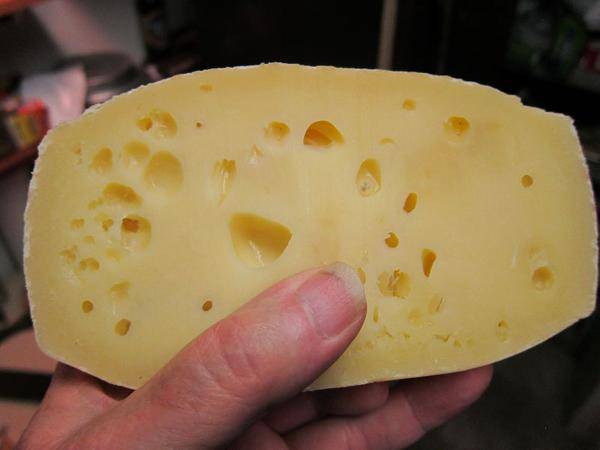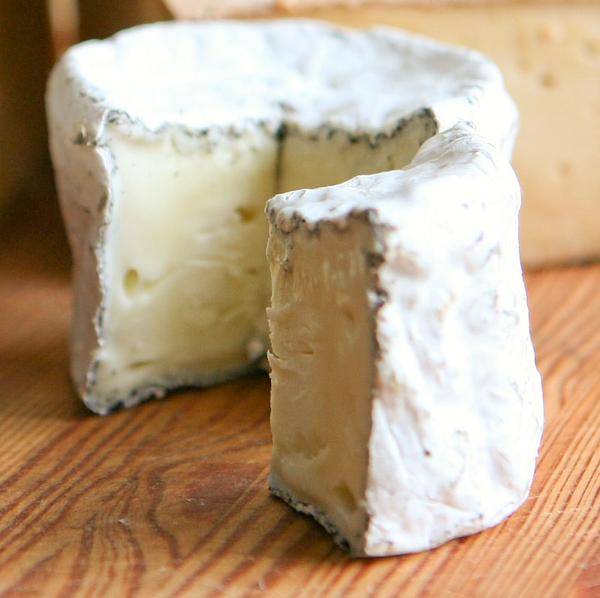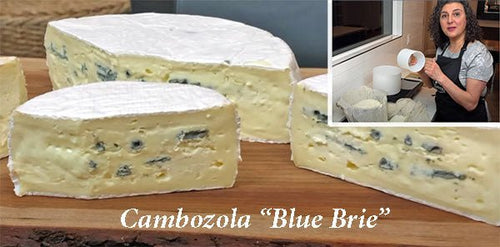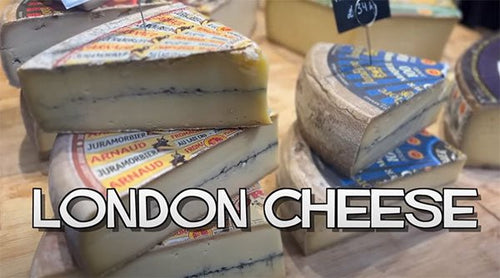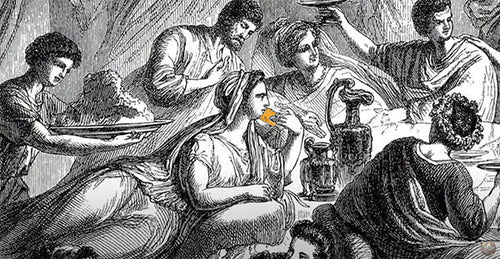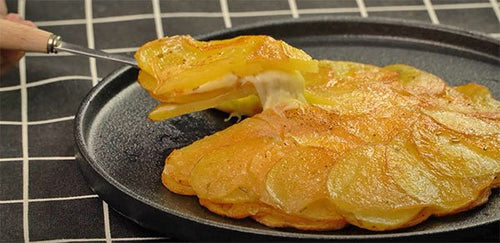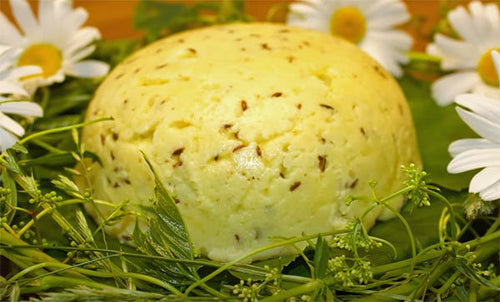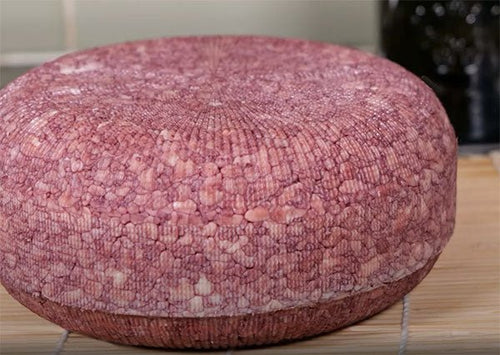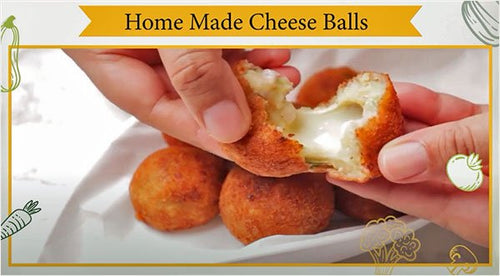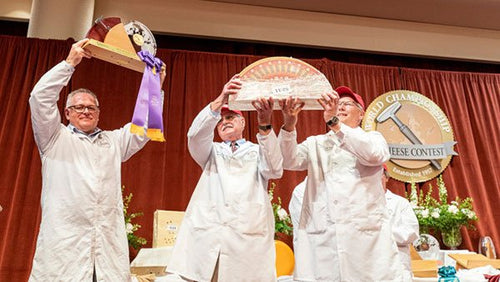Cheese Making Recipe of the Month
Limberger
Q. Why is this cheese so stinky?
A. It's all in the way you make it.
Yes, this cheese can run the gamut from mildly aromatic to "run for your life!" It's all up to you.
It's hard to believe, but the key is in the washing off of the surface bacteria during the final phase of making this cheese. Vigorous washing yields a milder cheese.
In his detailed recipe, Jim walks you through the whole process. The goal is for you to retain control of the situation so you don't have to buy a separate refrigerator for your homemade Limberger!
Meet a Fellow Cheese Maker
Barb Adams in Barnum, Minnesota
Barb Adams and her husband, Steve are supposedly retired, but they are working harder than they ever did.
They're raising goats on a little farm they bought in northeast Minnesota right before Barb retired.
They decided to raise goats after Barb went to the Minnesota State Fair to look at the various barn animals. She felt drawn to the goats, so she followed her heart and they have never looked back.
They now have 14 goats and that means a lot of milk! So, Barb has made a wide variety of cheeses.
Her favorite is smoked Scamorza. For this, she and Steve built their own smoker (at left) and it works quite nicely.
Steve's hobby is photography, so there are hundreds of beautiful pictures of their goats at their blog, "Out to Pasture."
News From Fellow Cheese Makers
Anna-Lena
Coffeecheese is traditional in the north of Finland and Sweden
Coffeecheese from Lapland
Thank you for a nice site about cheese. It is a good help and inspiration for me.
Have you tried to make the "coffeecheese" from northeast Sweden/Finland?
Norrbotten is a region in the north of Sweden, of which Swedish Lapland is a part.
Coffeecheese is also made in the north of Finland which is called Finish Lapland.
On both sides of the Torne River (the border between the two countries) is Tornedalen or the Torne River Valley. It could very well be the birthplace of this particular cheese.
This is the home of me and my family, although I now live in Uppsala, 560 miles away. (Anna-Lena at right)
Coffeecheese is traditional in the north of Finland and Sweden where people enjoyed coffee but didn't have enough bread to serve guests. In this area they could grow rye but not wheat.
It was also practical to carry along in the lunchbox at work in the wild.
This is a kind of Halloumi but not as salty and they put it in the cup of coffee (hot and strong) and eat it with a spoon.
People would serve the cheese to guests and the more you could serve the wealthier you were. (Coffee came late to these parts of Sweden (around the 1830s) and was expensive. So it was a sign of a rich farmer.)
It is also served with cloudberry jam (a local berry from the forest) as a dessert nowadays.
Today the cheese is a nostalgic thing for us born in the north. It's difficult to find here in southern Sweden so I have to make my own.
Anna-Lena Forsberg, Uppsala, Sweden
Missionaries Miss Their Cheese!
In January, 2012, we received this e-mail with some questions about how to start making cheese:
Hi! My name is Rebecca and I'm interested in learning how to make cheese!!! We live in Uganda, Africa and work at a children's center for orphans. Cheese is SUPER expensive and something we REALLY miss!
A few months later, after we sent them some supplies, we asked Rebecca to tell us more about her work:
Our family lives in Uganda seeking to point orphaned children to the Heavenly Father by placing them in family units. So we are not an orphanage but are caring for children through family. "A Father of the fatherless, a defender of widows is God in his holy dwelling. God sets the lonely in families." Psalm 68:5-6. If you want to look us up on on the web, we are newhopeuganda.org and you can check out our ministry.
Since we live in the village we can't get cheese and yogurt so we are thankful to be making our own now! Naomi (above) loves Mommy's "pink yogurt" with strawberry jelly.
Greetings from New Zealand
Hi, I have enjoyed your website - being a new cheese maker after taking a course in the North Island of New Zealand with cheese maker, Jean Mansfield. It was awesome and now every week I make cheese for my family here in Nelson, New Zealand.
Here are some of my efforts (above). My Camembert is my best cheese so far and have some Parmesan that will be ready for Christmas. The others are just about ready for cutting so I am keeping my fingers crossed.
Carolyn Lock, Nelson, New Zealand
A Hot Tip!
I read the waxing section of your website and thought I would pass on my favorite tip. I melt the wax in an old deep-fat fryer (now dedicated to this). It is TOTALLY safe since the heating element is sealed and I can even control the temperature precisely. I got it at a local Goodwill shop. They show up there regularly with missing lids or baskets or just because we are all deep frying less now. I have two of these now. One for cheese making and one for my daughter's batik work.
Michelle Smith, Skye Glen, Nova Scotia
Coffeecheese Submitted by Anna-Lena Forsberg
(Note: We have not had a chance to try this recipe yet so, if you make it, let us know how it went.)
Directions: Mix 2 quarts whole cow milk with 1/4 cup of cream in a large pot. Heat it to 98F. Lift the pot from the heat and add 2 tablespoons of Junket. Wait for 30 minutes and heat it carefully again while gathering the curd from the edges to the middle of the pot. When the curd is gathered to a ball, heat it to boiling temperature but it should not boil.
Take out the cheese and put it into a clean cloth and then in a mold to press out the whey until its dry.
Heat the oven to 400F. Press the cheese down in a pan greased with butter. It should be 1 inch thick. Bake it until it has nice color, approximately 30 minutes.
How to eat it: Cut the cheese in pieces and fill a coffee cup with them. Pour boiling hot strong Swedish coffee into the cup and wait a few minutes. Drink the coffee and fill up the cup with coffee again a second time. The cheese is now ready to eat with a spoon, while sipping the coffee.
Please send your cheese making news & photos to: moosletter@cheesemaking.com
It's been a very busy month!
First, the royal birthday ...
August 22nd, we (the royal staff) celebrated Ricki's birthday with a party at a local cafe. We presented her with a deluxe Bingo game and she then spent most of the rest of the party trying to get everyone to play. Having anticipated this well in advance, we were able to distract her by letting her play with her kazoo. (AY ...these Cheese Queens!)
Then, her daughter's wedding!
September 1st was a gorgeous day for an outdoor wedding at a beautiful site in Whately, Massachusetts. Jennifer, Ricki's oldest daughter married Jason Novak, her handsome and dashing beau. The reception was held at Quonquont Farm in a lovely restored barn overlooking an apple orchard.
Ricki brought her lighted hula hoops and as soon as it got dark, many intrepid guests and the bride herself hooped the night away. The amazing picture below was captured by royal photographer, Eric Limon.
The Art of Fermentation
In 2003, Sandor Katz brought the many forms of fermented foods together for the first time in a fun, easy to read format with his first book, "Wild Fermentation."
Now, nine years later, he has provided us with this "encyclopedia" of fermented foods, expanding immensely on the simple recipes in his first book.
The Art of Fermentation begins with a forward by Michael Pollen who describes his own, personal conversion to the world of fermented foods. He has embraced it all - lock, stock and barrel and from that vantage point he is able to say with great conviction to readers of the book - "Welcome to the party."































